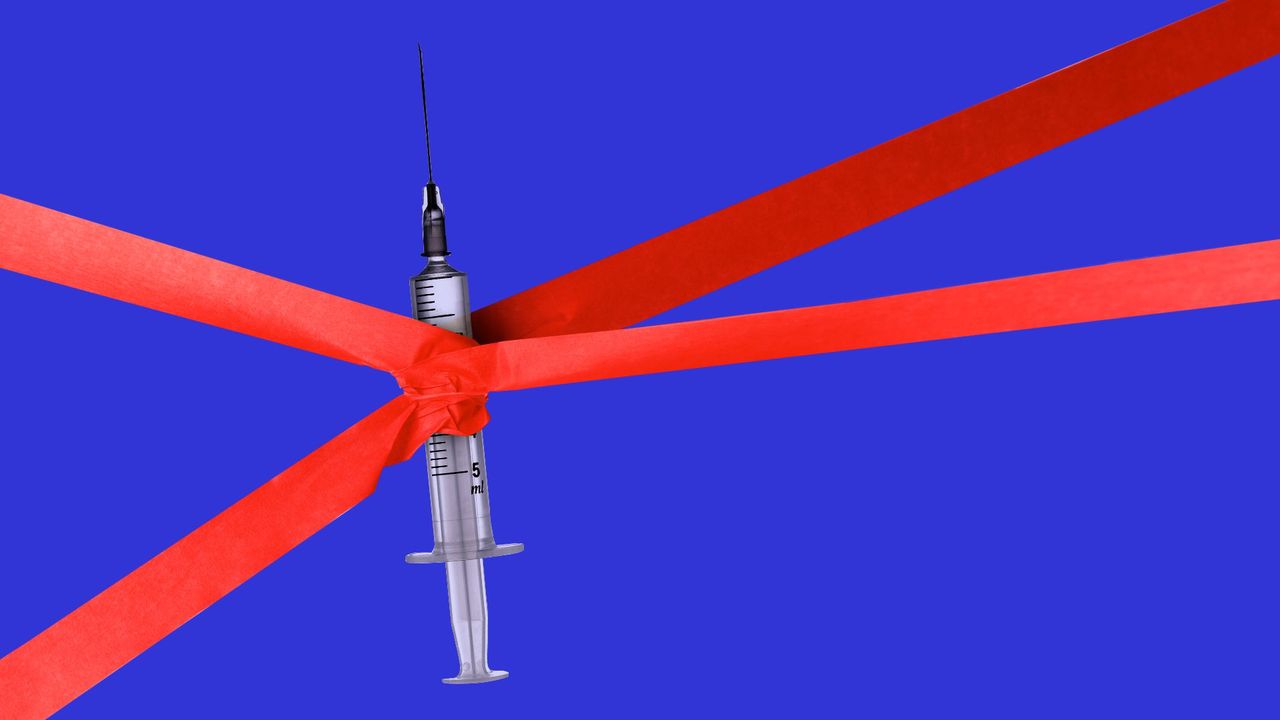Why the coronavirus vaccine rollout is behind schedule

Poor timing, poor planning and a lack of resources have all led to a coronavirus vaccine rollout that is going much slower than anticipated.
Why it matters: The spread of the virus is vastly outpacing the U.S.’ efforts to inoculate people against it.
What’s happening: Although the vaccination effort has sped up over the last few days, only 5 million Americans have received their first dose of a vaccine, per Bloomberg — or only 1.5% of the population.
- That means that only about 30% of the 17 million distributed vaccines have been administered.
The big picture: States have been warning for months that they don’t have the resources to pull off the ideal vaccination effort, but additional federal money only started flowing to states a few days ago, after President Trump signed the coronavirus relief package that Congress has been fighting over since the summer.
- Initial vaccine doses went mostly to frontline health care workers, meaning that administration of the shots was largely the responsibility of the same hospitals that are overwhelmed by a flood of coronavirus patients.
- Another few million doses are slotted for nursing home residents and staff, the vast majority of which haven’t yet been administered.
- And on top of all that, the vaccine rollout coincided with Christmas and New Years, further slowing down the process.
What they’re saying: “I think the biggest thing is that it’s not operating at a 24/7, flu vaccine kind of pace. It’s a lot more deliberate and there’s a lot more steps to getting that needle into people’s arms compared to other vaccines,” said Amesh Adalja, a senior scholar at Johns Hopkins Center for Health Security.
- “It was all predictable, and I think there wasn’t enough planning,” he added.
Between the lines: The rollout has also illuminated the tension between rigid adherence to priority groups — which were created for a reason — and the urgency of getting as many people vaccinated as quickly as possible.
- Unlike flu vaccine recipients, people must sign up to be vaccinated when it’s their turn to receive one, creating extra administrative burdens.
- Some experts are also worried that providers are leaving vaccines on shelves rather than giving them to people who aren’t in the current priority group.
- “I really hope that articulating these phases … isn’t leading to unnecessary barriers,” the CDC’s Nancy Messonnier told STAT’s Helen Branswell yesterday. “Don’t leave vaccine in the fridge. Don’t leave vaccine in the vial.”
Zoom in: New York City is responding to its slow rollout by setting up pop-up vaccine sites throughout the city, per the NYT, an approach that experts said is likely to be replicated across the country as the shots become more available to the general public.
- “I expect that the number of distribution sites will increase significantly” in the next phase of vaccinations, said KFF’s Josh Michaud. “You’re going to have to reach a much broader population group, and vaccines will by definition start to be used much more quickly.”
- But expanding the number of distribution sites, as well as the number of vaccine providers, will require resources.
The bottom line: “There has to be this change paradigm from being very, very measured to realizing we’re kind of in a warlike situation — we have to move as fast possible,” Adalja said.